#louise brooks' best film
Photo
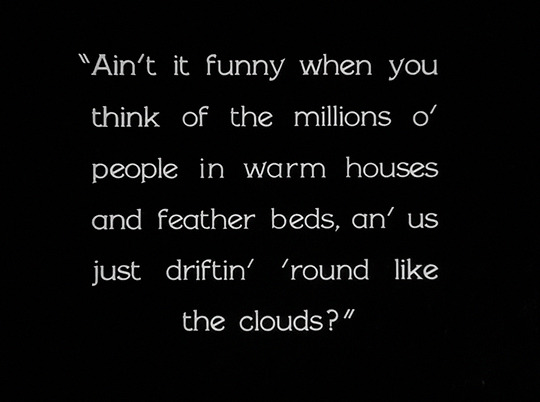



Beggars of Life (1928) dir. William A. Wellman
#beggars of life#william a wellman#louise brooks#richard arlen#filmedit#1920s#caps#*#*beggarsoflife#louise brooks' best film
55 notes
·
View notes
Text
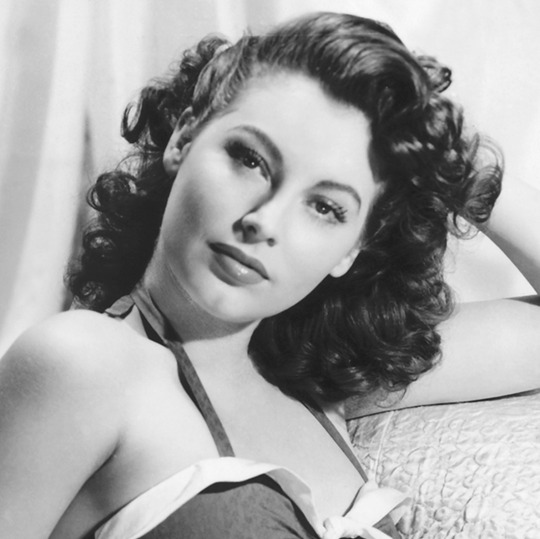

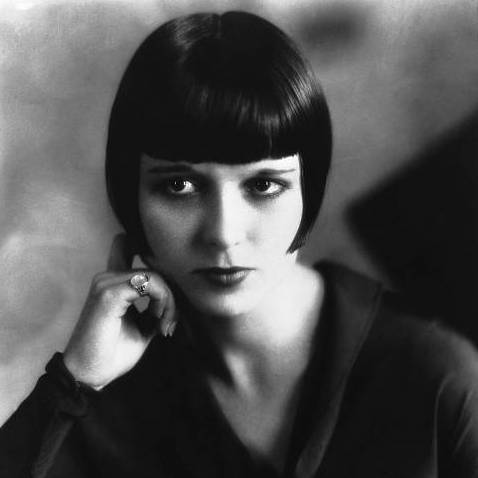
This is a three-way poll. Only one of these women will continue to the fourth round of the bracket.
Propaganda
Ava Gardner (The Killers, The Barefoot Contessa)— She's so goddamn hot. Her and Frank Sinatra could've sandwiched me and I would've thanked them for the privilege
Leonor Maia (The Tyrannical Father)— She didn't do a lot of movies but in The Tyrannical Father she is so pretty and charming that there's a guy who's obsessed with her to such a degree he is still a meme 80 years later. Her character's name is Tatão and the guy would stare at her whenever she was there and say her name to the tune of everything. A clock ticking: ta-tão, ta-tão, ta-tão. And to this day one of the lines people know the best from that very quotable movie is "ta-tão". She inspired crushes and horniness of legendary levels.
Louise Brooks (Pandora's Box, Diary of a Lost Girl)—Louise Brooks started off as a dancer and went to work in the Follies before going to Hollywood. Disappointed with her roles there, she went to Germany and proceeded to make Pandora's Box, the first film to show a lesbian on-screen (not her but one of her many doomed admirers in the film), and Diary of a Lost Girl, both of which are considered two of the greatest films of the 20th century. She helped popularize the bob and natural acting, acting far more subtly than her contemporaries who treated the camera as a stage audience. After the collapse of her film career and a remarkably rough patch as a high-end sex worker, she was rediscovered and did film criticism, notably "Lulu in Hollywood," which Rodger Ebert called "indispensable." Also, christ. Look at her.
This is round 3 of the tournament. All other polls in this bracket can be found here. Please reblog with further support of your beloved hot sexy vintage woman.
[additional propaganda submitted under the cut.]
Ava Gardner:
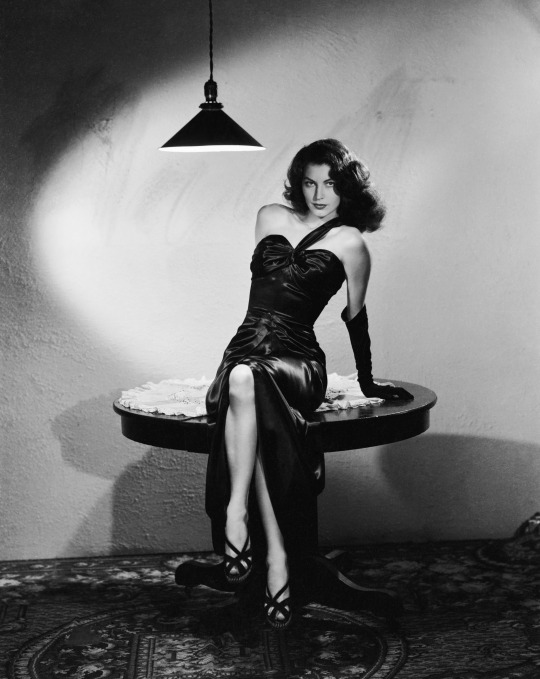
Ava Gardner is one of my favorite actresses of all time. Although a lot of her roles in movies are about her being beautiful and nothing else, there are some films where her acting truly shines.

Gifset: https://www.tumblr.com/pelopides/721438308726603776/ava-gardner-as-pandora-reynolds-pandora-and-the
Gifset 2: https://www.tumblr.com/portraitoflestatonfire/731899355804598272/if-the-loustat-reunion-doesnt-look-like-this-then
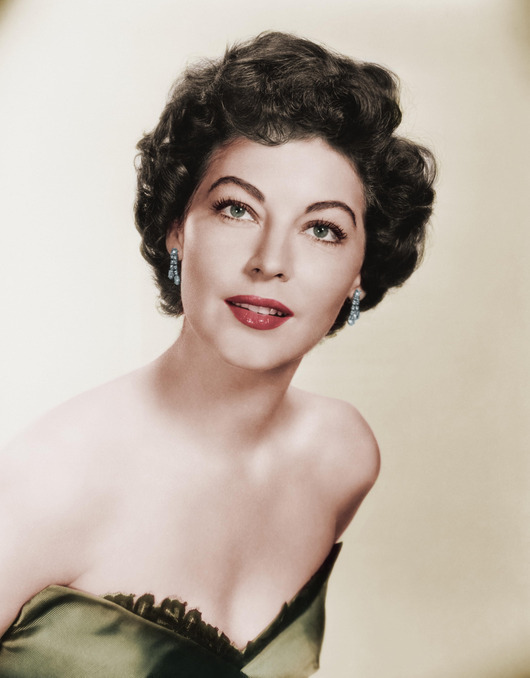
HER FACE. LOOK AT IT. Also was a life long supporter of civil rights and a member of the NAACP, had lots of fun love affairs with other stars, bullfighters, married several times but was also happy in between to just have lovers and was unapologetically herself.
I literally gasp every time I see her.

Between 1942 and 1964, Ava Gardner was credited in no less 50 films, and is still considered by some to be the most beautiful actresses that ever graced the silver screen. Despite life-long insecurities regarding her talent as an actress, she weathered public scandal, industry hostility, and outright condemnation by the Catholic Church with fearless grace. She would later in life talk candidly about the reality and pain of living through two (studio approved!!) abortions during her short marriage to Frank Sinatra, and while the two of them could not make their relationship work, they remained in each other’s lives for nearly 30 years. She would forever describe herself as a small-town girl who just got lucky, but always felt like a beautiful outsider.

Really genuinely one of the most beautiful human beings I have ever seen. An autodidact. Had amazing chemistry with Gregory Peck to the point where I do think about watching On The Beach again sometimes because they're so good together even though that movie did destroy me. Was a great femme fatale in many movies.

There is no additional propaganda for Leonor Maia.
Louise Brooks:
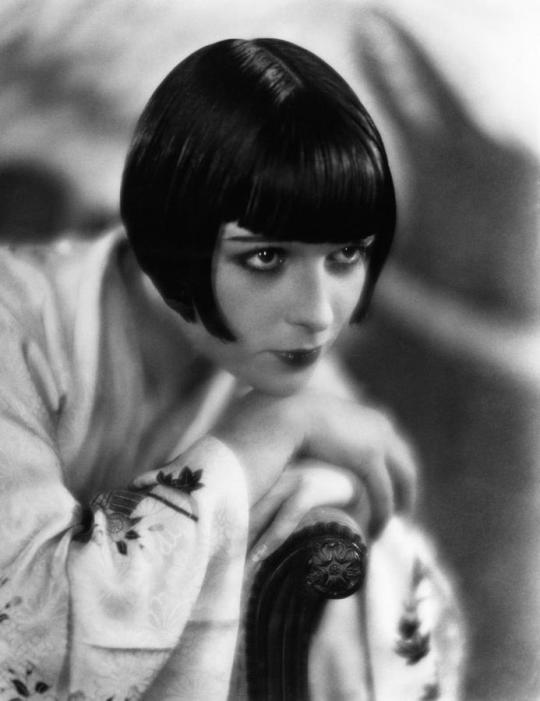
"Defined the style of the modern flapper. A gaze that could make a stone fall in love."
"Louise Brooks left a legend far greater than her real achievement as an actress, but even today few people have seen her films. In our own time, the fascination with Brooks seems to have begun in 1979 with a profile by Kenneth Tynan in the New Yorker, which revealed that the actress who made her last movie in 1938 was alive and living in Rochester, N.Y. Such was the power of Tynan's prose that people began to seek out her existing films, primarily this one, to discover what the fuss was about. What we see here is a healthy young woman -- she was 23 when the film was released -- with whom the camera, under G.W. Pabst's influence, is fascinated. There is a deep paradox in Brooks and her career: the American girl who found success in the troubled Europe between two wars; the vivid personality who briefly dazzled two continents but faded into obscurity; the liberated woman who had affairs with such prominent men as CBS founder William S. Paley as well as with women including (by her account) Greta Garbo but wound up a solitary recluse. And all of this seems perfectly in keeping with her most celebrated role in Pandora's Box. For despite her bright vitality, her flashing dark eyes and brilliant smile, Brooks's Lulu becomes the ultimate femme fatale, careering her way toward destruction, not only of her lovers but eventually of herself."
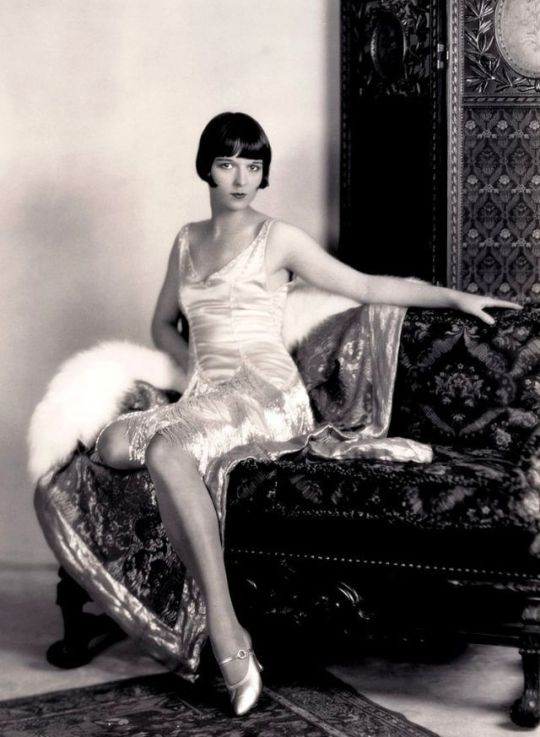
"She invented having bangs to indicate that you have borderline personality disorder"
"chances are if youve ever seen a "flapper girl" character or even just art of a generic flapper type made after the 20s it was based on her appearance - particularly the bob hairstyle! she had some pretty rough experiences through her life before during and after her tumultuous acting career which ended in 1938 but she made it to the 80s, wrote an autobiography and did a lot of interviews that she was never afraid of being honest in about her own life or peers of the age, and apparently was unabashed about some affairs she had with well known women (including greta garbo!!)"
"She read Proust and Schopenhauer on set between sets. She was one of the original flappers/new women of the 1920s. She had a one night stand with Garbo and was the inspiration for Sally Bowles in Cabaret. Truly a stone cold fox."

"on her wikipedia page it says her biographer said she "loved women as a homosexual man, rather than as a lesbian, would love them" and while i have no idea if this is true or not i thought that was very gender of her"
"despite being american she was big in german expressionist films and thus her aesthetic was unmatched!!"

So far ahead of her time in regard to portraying complicated women. Timeless elegance. "I learned to act by watching Martha Graham dance, and I learned to dance by watching Charlie Chaplin act.” - Louise Brooks

299 notes
·
View notes
Text

30 Days of Classic Queer Hollywood
Day 27: Greta Garbo (1905 - 1990)
"We cannot help our nature, as God has created it. But I have always thought you and I belonged together." - Garbo to her friend Mimi Pollak
Greta Garbo was a Swedish-American actress who had great success in Hollywood during its silent and early golden eras. She was thrice nominated for the Academy Award for Best Actress.


Garbo was a bisexual woman. She never married and bore no children. She has been romantically linked with lesbian writer Mercedes de Acosta and actresses Lilyan Tashman and Louise Brooks. Personal letters reveal that Garbo harbored feelings for her friend, actress Mimi Pollak, for many years.

Garbo is known for her performances in films such as Flesh and the Devil (1926), A Woman of Affairs (1928), Queen Christina (1933), and Ninotchka (1939). In 1999, the American Film Institute ranked Garbo fifth on its list of the greatest female stars of classic Hollywood.

#greta garbo#queer#sapphic#bisexual#lesbian#gay history#bisexual icons#queer history#lgbtqia+ history#vintage#classic hollywood#old hollywood#classic film stars#beautiful actresses#classic queer hollywood#colorized#photo enhancement
33 notes
·
View notes
Note
16, 17, & 30!
16. favorite book to film adaptation?
now you may think i would say east of eden but actually i think the east of eden film is maybe one of the worst book adaptations ever. that being said maybe it is my favorite just because it's the one i care about the most? actually on second thought sweet smell of success is a book/short story adaptation so its DEFINITELY that one. one of the best movies ever.
17. favorite actress
this is difficult because i dont really think about actors/actresses that much in that way... i do absolutely love shirley maclaine. i love molly ringwald. i love louise brooks. but i dont know if i have a Favorite actress...
and i already did 30!
3 notes
·
View notes
Text
Louise Brooks - The Flapper Icon












Mary Louise Brooks (born in Cherryvale, Kansas on November 14, 1906) was an American film actress during the 1920s and 1930s. She is regarded today as "The Flapper Icon," in part due to her trend-setting bob hairstyle and modern fashion sense. Those that do not recognize her name almost certainly know her look.
Born in a typical a typical Midwestern community, Brooks joined the Denishawn School of Dancing and Related Arts in Los Angeles at the age of 15. She soon found work a as a chorus girl in George White's Scandals and as a dancer in the Ziegfeld Follies in New York City.
Her Follies stint attracted the attention of Walter Wanger, a producer at Paramount Pictures. He had her sign a contract with the studio in 1925. During this time, Brooks gained a cult following in Europe for her role in the Howard Hawks' film A Girl in Every Port (1928).
Dissatisfied with her mediocre roles in Hollywood films, Brooks went to Germany in 1929 and starred in some of the silent era's films, including Pandora's Box (1929).
When Brooks returned to Hollywood in 1931, she was cast in some mainstream films such as God's Gift to Women (1931). However, her career prospects as a film actress significantly declined by 1940. Brooks briefly returned to Wichita, where she was raised, and then moved to New York City, where she worked numerous jobs.
Following the rediscovery of her films by cinephiles in the 1950s, Brooks began writing articles about her film career and had had special relationships with film historians James Card, John Kobal, and Kevin Brownlow.
After suffering from degenerative osteoarthritis and emphysema for many years, Brooks died of a heart attack in her apartment in Rochester, New York at 78.
Legacy:
Served as the inspiration for the long-running Dixie Dugan (1929-1966) newspaper strip by John H. Striebel, the comic books of Valentina (1965-1996) of Guido Crepax, and Ivy Pepper in Tracy Butler's Lackadaisy (2006-2020) comic series
Is the basis of the movie Show Girl (1928) and its subsequent musical Show Girl (1929), and the graphic novel entitled Louise Brooks: Detective (2015)
Opened a dance studio in Beverly Hills and Wichita, Kansas in the 1940s
Authored a booklet titled The Fundamentals of Good Ballroom Dancing in 1940
Became a noted film writer in the late 1950s for various journals like Film Culture and Sight and Sound
Inspired many cinematic and literary characters such as Sally Bowles in Bob Fosse's Cabaret (1972) and Lulu in Something Wild (1986)
Published a collection of autobiographical essays, Lulu in Hollywood, in 1982, which was ranked number 44 in the Hollywood Reporter's "100 best film books of all time" in 2023 and number 28 in the Los Angeles Times' "50 best Hollywood books of all time" in 2024
Presented with the George Eastman Award for Distinguished Contribution to the Art of Film in the 1982 Festival of Film Artists
Ranked number 44 by Empire magazine's 100 sexiest stars in film history in 1995
Is the subject of the Emmy-nominated documentary Louise Brooks: Looking for Lulu, which was commissioned by Turner Classic Movies in 1998
Is a central character in the PBS film The Chaperone (2018), which depicts her initial arrival in New York
#Louise Brooks#Flappers#Flapper Icons#The Flapper#The Flapper Icon#Lulu#Lulu in Hollywood#Silent Films#Silent Movies#Silent Era#Silent Film Stars#Golden Age of Hollywood#Classic Hollywood#Film Classics#Classic Films#Old Hollywood#Vintage Hollywood#Hollywood#Movie Star#Hollywood Walk of Fame#Walk of Fame#Movie Legends#Actress#hollywood actresses#hollywood icons#hollywood legend#movie stars#1900s
3 notes
·
View notes
Text
In defence of nuking the fridge
Indiana Jones and the Dial of Destiny deserves all the criticism it gets (I've seen it and, yeah, it's special in a way that requires air quotes around the word "special"). But one film I've always thought was unfairly treated by fans and critics was Kingdom of the Crystal Skull.
No, I don't think it's the best film in the series, although it's a masterpiece compared to Dial, but I do agree with the consensus the series should have ended with Last Crusade (I'm not even a huge fan of Indiana Jones Chronicles, really, other than the one episode with Liz Hurley in it). But it's not that awful a film. From Cate Blanchett rocking the Louise Brooks bob to the welcome (if random) use of Bill Haley's Shake, Rattle and Roll on the soundtrack (possibly a nod to co-creator George Lucas using Rock Around the Clock on American Graffiti), it's a fun little movie.
But people seem to never want to let it live down the infamous nuking the fridge scene:

For those who don't know, it's an infamous sequence in which Indiana (for plot reasons) finds himself at the Nevada Test Site where they exploded nuclear bombs for testing, and he ends up inside one of the homes they set up to gauge effects. These were real - they fitted them out with working appliances and furniture, even TVs, and then did this to them...

...in the process providing stock footage to a generation of filmmakers making WW3 movies in the decades to come.
Indy realizes what's about to happen, so he hides instead a refrigerator (which were cast-iron jobs back in the day) and he rides out the explosion seemingly not only without injury but as Dial of Destiny (not to mention the rest of Crystal Skull) indicates, without so much as radiation poisoning.
Why I'm defending an obviously silly sequence is people refuse to take the rest of the film seriously because of it, yet Indiana Jones and the Temple of Doom, a much better regarded film and the middle part of the "holy trinity," has a sequence in which Indy and his friends (including the kid who later grew up to be everything everywhere all at once - sorry, couldn't resist) dive out of an airplane riding a rubber life raft that doesn't even inflate until nearly on the ground. And they survive unharmed. Even after the same raft immediately falls off a huge cliff and ends up in a shallow-looking river:

The Mythbusters tried to replicate the stunt using a mannequin and to paraphrase something said after impact: "We have a full forearm and a hand over here on the raft". And Jamie is apparently talking to somebody with the rest of the dummy - using a walkie-talkie. Needless to say Indy would probably not be in any shape to take on the bad guys after.
So I guess my point is, if you can take the Temple of Doom life raft parachute seriously, nuking the fridge in Crystal Skull really isn't that far fetched. (This is not an original idea - Redditors have mentioned this too).
Too bad the Mythbusters didn't properly test to see if nuking the fridge would have worked. I know they liked blowing stuff up, but I doubt they would have been able to make their own warhead or find one at the surplus store...
#indiana jones and the kingdom of the crystal skull#indiana jones and the temple of doom#indiana jones#film meta#mythbusters#can you tell i'm bored at work?
2 notes
·
View notes
Photo
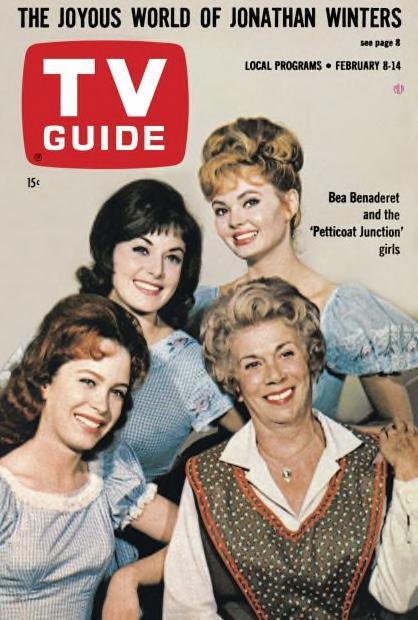
TV Guide - February 8 - 14, 1964
Beatrice Benaderet (/ˌbɛnəˈdɛrət/ ben-ə-DERR-ət; April 4, 1906 – October 13, 1968) Actress and comedienne.
Benaderet was a prominent figure on television in situation comedies, first with The George Burns and Gracie Allen Show from 1950 to 1958, for which she earned two Emmy Award nominations for Best Supporting Actress. In the 1960s, she had regular roles in four series until her death from lung cancer in 1968, including the commercial successes The Beverly Hillbillies, The Flintstones, and her best-known role as Kate Bradley in Petticoat Junction. (Wikipedia)
Linda Kaye Henning (born September 16, 1944) Actress and singer most notable for starring in the 1960s sitcom Petticoat Junction. (Wikipedia)
Patricia Joy “Pat” Woodell (July 12, 1944 – September 29, 2015) Actress and singer, best known for her television role as Bobbie Jo Bradley from 1963 to 1965 on Petticoat Junction. (Wikipedia)
Jeannine Brooke Riley (born October 1, 1940) Film and television actress.
Winning the role over 300 competitors, Riley portrayed Billie Jo Bradley on the first two seasons of the CBS sitcom Petticoat Junction (1963–1965). Riley left the series in 1965 to pursue movies. She also had a regular cast member role on the comedy variety series Hee Haw (1969–1971). She played Lulu McQueen (a take-off on Ginger Grant, played by Tina Louise, from Gilligan's Island) on the western sitcom Dusty's Trail, which aired in 1973–74. (Wikipedia)
3 notes
·
View notes
Text
Salute to Sig Arno
A salute today to German-Jewish comedic actor Sig Arno (Siegfried Aron, 1895-1975).
Originally from Hamburg, Arno started out as a stage comedian and began appearing in silent films as early as 1920. Of his nearly 100 German films, G.W. Pabst’s Pandora’s Box (1929) with Louise Brooks remains the best known to Americans. Though he was was a star in his native country, Arno was forced to flee when…

View On WordPress
2 notes
·
View notes
Photo

Neil Hamilton and Constance Bennett in What Price Hollywood? (George Cukor, 1932)
Cast: Constance Bennett, Lowell Sherman, Neil Hamilton, Gregory Ratoff, Brooks Benedict, Louise Beavers, Eddie Anderson. Screenplay: Jane Murfin, Ben Markson, Gene Fowler, Rowland Brown, based on a story by Adela Rogers St. John. Cinematography: Charles Rosher. Art direction: Carroll Clark. Film editing: Del Andrews, Jack Kitchin. Music: Max Steiner.
Bradley Cooper's 2018 film A Star Is Born is often called a remake of the films by that title starring Fredric March and Janet Gaynor in 1937, James Mason and Judy Garland in 1954, and Kris Kristofferson and Barbra Streisand in 1976. But all four of them can trace their origin to What Price Hollywood?, produced by David O. Selznick and directed by George Cukor in 1932. The name is different but the plot's the same: A successful man in the entertainment business discovers a young woman whom he helps become a star, but as her career ascends, his personal problems send him into a tailspin. if there's any doubt about the link with What Price Hollywood? and at least the first A Star Is Born, both were produced by Selznick. RKO, which released What Price Hollywood?, threatened to sue Selznick over the similarities, but decided against it. Selznick also asked Cukor to direct the 1937 film, but Cukor declined, so William A. Wellman took it on. But then Cukor went on to direct the 1954 Star Is Born. I don't think there's any direct connection between What Price Hollywood? and the 1976 version, produced by Streisand and Jon Peters and directed by Frank Pierson, but the lineage by then was obvious. The idea for the original film is a natural in a Hollywood that had become increasingly conscious of its own myth, and many real-life rising-star-falling-mentor analogs can be found in the history of the industry. Selznick commissioned Adela Rogers St. Johns, a former reporter for Photoplay and the Hearst newspapers, to write the story for the film, and various other hands turned it into a screenplay, though St. Johns and Jane Murfin claimed most of the credit when they were nominated for an Oscar for best original story. The film begins with a touch of screwball comedy when Max Carey (Lowell Sherman), an alcoholic director, encounters Mary Evans (Constance Bennett), a waitress at the Brown Derby looking for her chance to break into the movies. After some funny scenes involving Max's drunkenness and Mary's initial ineptness as an actress, the movie unfortunately begins to get serious. Though it's clear Mary really loves Max, when she becomes a big star she marries a society polo player, Lonny Borden (Neil Hamilton), after a somewhat cutesy courtship. But Borden is unhappy being "Mr. Mary Evans," and eventually storms out, though she's pregnant. Meanwhile, Max's decline continues, and after Mary rescues him from the drunk tank and promises to rehabilitate him, he shoots himself, thereby embroiling her in a headline-making scandal. But then Borden returns to apologize and all is well again. What keeps the film alive despite its clichés are the performances. Bennett is quite charming, and Sherman clearly models Max on John Barrymore, whom he knew well: He was married to Helene Costello, whose sister, Dolores, was Barrymore's third wife. The supporting cast includes Gregory Ratoff as the producer of Mary's films, Louise Beavers as (of course) her maid, and Eddie Anderson as Max's chauffeur -- five years before he became famous as Jack Benny's chauffeur, Rochester, on radio.
6 notes
·
View notes
Text
Meet Me At The Intersection of Theatre, Film, Fashion, and Public Persona
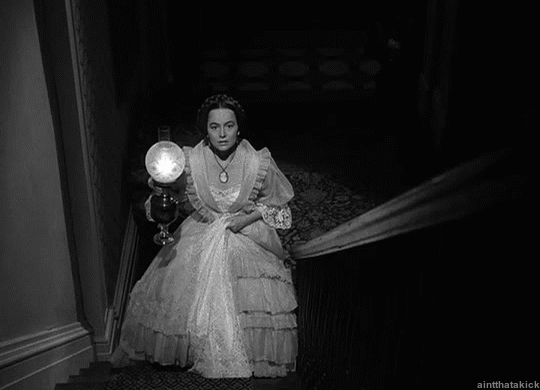
Talking about costume in theatre and film puts me in mind of theatre's influence in fashion starting in the 18th century or thereabouts and picking up serious steam in the 19th century. (Reference: Marlis Schweitzer, When Broadway Was The Runway.) Theatre costumers quickly realized the importance of giving the audience visual cues for this or that character type. This snowballed before too long into collaborations with the leading fashion houses of the day, which resulted in many 19th century theatre extravaganzas more or less serving as de facto fashion shows. Most of the people in the audience were women; most of the pundits and critics decrying the theatrical fashion shows and subsequent influence on women were (drum roll please) men. Those actresses who carried packed houses often touted the importance of costume and fashion in helping them craft a character, such that dramatic performers like Eleonora Duse were an anomaly. (The more things change, the more they stay the same. Is this conversation ringing any bells?)
This mania for costume and fashion as an ostensible means of crafting the character carried over into films. Women scrambled to imitate Mary Pickford, Theda Bara, Clara Bow, Louise Brooks, Alla Nazimova, and many others. Once again men scoffed at the influence of celebrity on impressionable young women. Meantime more and more women were conscious of having a public persona for the first time; they were keen to know what persona and thus what styles would best suit them. Fashion and style guides delineating this knowledge proliferated starting in the 1920s, or not long after the passage of the 19th Amendment.
Margaretta Byers's Designing Women, published in 1938, was one such attempt to fill the growing demand. Her "types" included the coquette, the gamine, the romantic, the patrician, the exotic (!!!), and the sophisticate. Harriet T. McJimsey would later borrow inspiration from this to give us the ingenue, the gamine, the romantic, the classic, the athletic (natural), and the dramatic. The impulse to categorize personas or so-called style types is still with us. John Kitchener has his system of essences while David Kibbe has a limited range of image IDs.
It goes almost without saying that until recent years much of this style typing or crafting a persona was aimed at white women. Inclusive it was not. In the 1930s the most diversity that was permitted was someone like Dolores del Rio or Anna May Wong. The 1940s and 1950s weren't much better given that the likes of Lena Horne and Dorothy Dandridge had to fight tooth and nail behind the scenes to make any headway in their careers. So you see the process of slotting oneself into a visual persona had--and has--its pitfalls and shortcomings.
With Hollywood and other stylists it is difficult not to wince as certain personae are given primacy over the others, since they use a variant of this system here and now in the present day. Everyone is supposed to be an ingenue or a bombshell (romantic), and when they aren't it is grudgingly recognized that their actual type is something else. It is refreshing to see a gamine or a free-spirited natural woman amid a sea of aspiring bombshells, and even they--you can be sure--have to talk their stylist down from stuffing them into complicated corsetry and ruched boudoir dresses. Every so often one will see a classic beauty in patrician styles reminiscent of Grace Kelly, and this is lovely, but the dramatic or arty sophisticate is a bit more rare. Tilda Swinton, Cate Blanchett, Anjelica Huston, and a handful of others are the current standard-bearers for daring and dramatic looks.
Nowadays there is much fashion inspiration taken from television, which has inherited the original persona system and the accompanying visual cues, although today's coquette or ingenue is often loaded down with bombshell overtones and presented as a "sexy baby" (see Euphoria if you have any doubts). "You are a sexy baby! And you are a sexy baby! Everybody gets to be a sexy baby! Unless you're over a certain age." I have no problem with mature women being presented as who and what they are, but the ageism is pervasive across the entertainment industry--although that's its own topic and should be reserved for a separate rant.
How does this impact real women? It does and it doesn't, from what I've been able to observe. While the pandemonium has caused more women to be more interested in refining their visual presentation, there are just as many of us who simply can't be bothered. Yes, we take much inspiration still from film and TV, but most are just as likely to slouch around in comfort. Are we entering a post-persona age or is it simply the cool thing to pretend not to care? Time will tell.
6 notes
·
View notes
Photo

Karyn Parsons-Rockwell (born October 8, 1966) is an actress and comedian. She is best known for her role as Hilary Banks on The Fresh Prince of Bel-Air. She starred in the 1995 film Major Payne, and The Job (2001-2002) as Toni. She was born in Los Angeles. In an interview for Essence in 2008, she described her parentage as biracial. Her mother, Louise Parsons, is African American from Charleston, South Carolina, and her father, Kenneth B. Parsons, is British American of English and Welsh descent and from Butte, Montana. She attended Santa Monica High School. She co-created, co-produced, co-wrote, and co-starred in the sitcom Lush Life. In 2001, she starred in the critically acclaimed but short-lived television series The Job. Besides television, she has starred in several films, particularly in comedies such as Late Nights (1992), and The Ladies Man (2000). She is the creator of Sweet Blackberry, a line of animated films about unsung African American heroes. The first in the series is about Henry "Box" Brown, a slave who mailed himself to freedom. She published her first middle-grade novel, How High the Moon, which was loosely inspired by stories of her mother's childhood in the Jim Crow south. She married The Young and the Restless actor Randy Brooks (1987-1990). She married director Alexandre Rockwell in 2003. Together they have a daughter and a son. #africanhistory365 #africanexcellence https://www.instagram.com/p/CjdWVWWLvFF/?igshid=NGJjMDIxMWI=
2 notes
·
View notes
Text

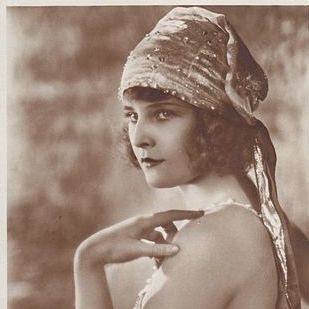
Propaganda
Colleen Moore (Flaming Youth, Ella Cinders)— One of the highest paid, most in-demand actresses of the silent film era, Colleen Moore defied genre and kept herself one step ahead of the competition (and although Moore was the OG flapper, her longtime rival Clara Bow would become more famous for the image) as well as invested her earnings to ensure her financial security after she retired. She even wrote a book all about investing in the stock market! Moore also nurtured a passion for dollhouses throughout her life and helped design and curate The Colleen Moore Dollhouse, which has been a featured exhibit at the Museum of Science and Industry in Chicago since the early 1950s.
Lilian Harvey (Die Drei von der Tankstelle, Der Kongreß Tanzt, Glückskinder)— Lilian Harvey was one of the most popular German film stars of her time, appearing alongside frequent co-star Willy Fritsch like a European version of Ginger Rogers and Fred Astaire. She had it all: she could act, she could dance, she could sing, she was hot, and she wasn't afraid to stick it to the Nazis. During the 1930s, she remained in contact with her Jewish friends and colleagues, which earned her the scrutiny of the Gestapo. When choreographer Jens Keith was arrested for having a sexual relationship with another man, Lilian posted his bail, allowing him to escape to France. She was eventually forced to flee Germany herself, and her film career never recovered. She is perhaps best known to American filmgoers from her brief mention in "Inglourious Basterds," when Joseph Goebbels insists that her name not be mentioned in his presence.
This is round 1 of the tournament. All other polls in this bracket can be found here. Please reblog with further support of your beloved hot sexy vintage woman.
[additional propaganda submitted under the cut]
Lilian Harvey:
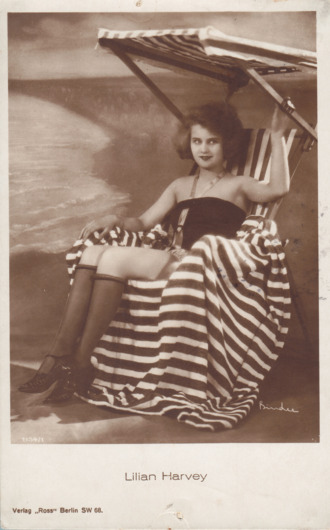
Colleen Moore:
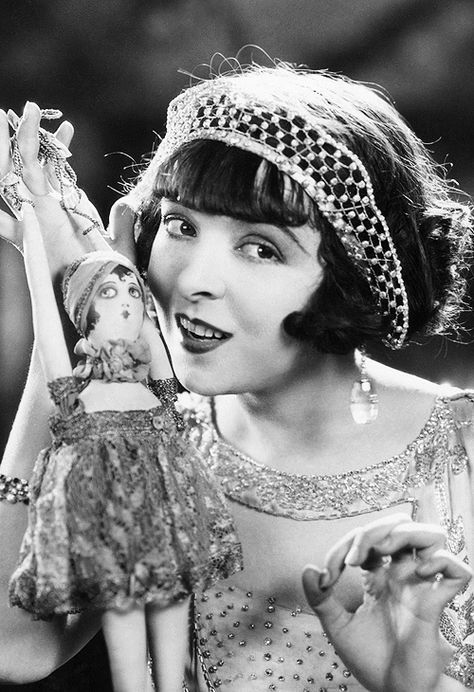
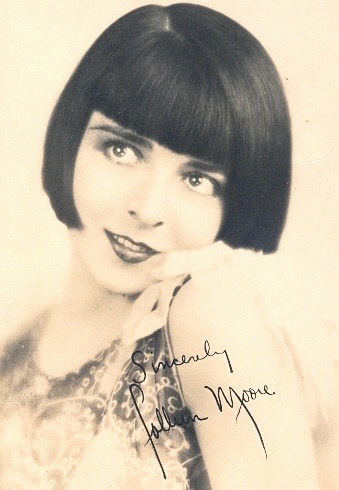
Colleen is charming and funny, she was one of the starlets to popularize the iconic 1920s bob!
She's like the deep cut version of Louise Brooks, with majority silent films, and a large percentage of them lost-- BUT 'Why Be Good?' is such a fun movie and she wears really cute dresses and has all the best parts of Pre-Code leading lady fun!
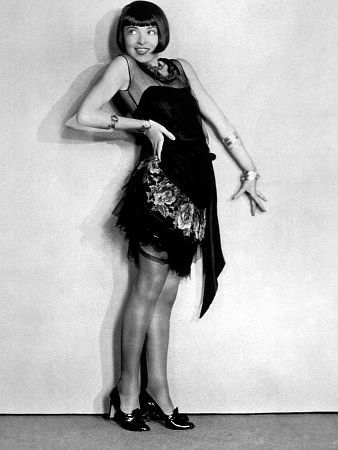
92 notes
·
View notes
Text


Hello all.
Feel free (you and yours) to vote in our 2024 Oscar Pool!
Deadline is 6 pm ET Sunday, March 10th before the 7:00 pm ET ABC broadcast.
You must vote in all categories (feel free to also say who you want to win in any of the categories in addition to the one you think will win).
New this year: please include a charity organization if you can. No worries if you don't have one.
Charity organization:
Oscar Pool 2023 players by correct guesses (this is like when my 10th grade geometry teacher had us sit by grade after every class, boo). If you're not on this list, please consider joining, no worries.
Jane, Josh, Sam, Caroline, Rebecca, Lizz, David, Louise, Mollie, George, Tracy, Amanda, John, Patty, Diana, Jeanne
Here is a link to a printable ballot, https://abc.com/shows/oscars/news/nominations/oscars-2024-printable-ballot, and the full list of nominees are pasted here, too. Email your choices to [email protected].
https://www.oscars.org/oscars/ceremonies/2024
Best picture
American Fiction
Anatomy of a Fall
Barbie
The Holdovers
Killers of the Flower Moon
Maestro
Oppenheimer
Past Lives
Poor Things
The Zone of Interest
Best actor in a leading role
Bradley Cooper – Maestro
Colman Domingo – Rustin
Paul Giamatti – The Holdovers
Cillian Murphy – Oppenheimer
Jeffrey Wright – American Fiction
Best actor in a supporting role
Sterling K Brown – American Fiction
Robert De Niro – Killers of the Flower Moon
Robert Downey Jr – Oppenheimer
Ryan Gosling – Barbie
Mark Ruffalo – Poor Things
Best actress in a leading role
Annette Bening – Nyad
Lily Gladstone – Killers of the Flower Moon
Sandra Hüller – Anatomy of a Fall
Carey Mulligan – Maestro
Emma Stone – Poor Things
Best actress in a supporting role
Emily Blunt – Oppenheimer
Danielle Brooks – The Color Purple
America Ferrera – Barbie
Jodie Foster – Nyad
Da’Vine Joy Randolph – The Holdovers
Best directing
Anatomy of a Fall – Justine Triet
Killers of the Flower Moon – Martin Scorsese
Oppenheimer – Christopher Nolan
Poor Things – Yorgos Lanthimos
The Zone of Interest – Jonathan Glazer
Best animated feature film
The Boy and the Heron
Elemental
Nimona
Robot Dreams
Spider-Man: Across the Spider-Verse
Best adapted screenplay
American Fiction
Barbie
Oppenheimer
Poor Things
The Zone of Interest
Best original screenplay
Anatomy of a Fall
The Holdovers
Maestro
May December
Past Lives
Best cinematography
El Conde
Killers of the Flower Moon
Maestro
Oppenheimer
Poor Things
Best costume design
Barbie
Killers of the Flower Moon
Napoleon
Oppenheimer
Poor Things
Best documentary feature film
Bobi Wine: The People’s President
The Eternal Memory
Four Daughters
To Kill a Tiger
20 Days in Mariupol
Best documentary short film
The ABCs of Book Banning
The Barber of Little Rock
Island in Between
The Last Repair Shop
Nǎi Nai & Wài Pó
Best film editing
Anatomy of a Fall
The Holdovers
Killers of the Flower Moon
Oppenheimer
Poor Things
Best international feature film
Io Capitano
Perfect Days
Society of the Snow
The Teachers’ Lounge
The Zone of Interest
Best makeup and hairstyling
Golda
Maestro
Oppenheimer
Poor Things
Society of the Snow
Best original score
American Fiction
Indiana Jones and the Dial of Destiny
Killers of the Flower Moon
Oppenheimer
Poor Things
Best original song
The Fire Inside – Flamin’ Hot
I’m Just Ken – Barbie
It Never Went Away – American Symphony
Wahzhazhe (A Song for My People) – Killers of the Flower Moon
What Was I Made For? – Barbie
Best production design
Barbie
Killers of the Flower Moon
Napoleon
Oppenheimer
Poor Things
Best animated short film
Letter to a Pig
Ninety-Five Senses
Our Uniform
Pachyderme
WAR IS OVER! Inspired by the Music of John & Yoko
Best live action short film
The After
Invincible
Knight of Fortune
Red, White and Blue
The Wonderful Story of Henry Sugar
Best sound
The Creator
Maestro
Mission: Impossible – Dead Reckoning Part One
Oppenheimer
The Zone of Interest
Best visual effects
The Creator
Godzilla Minus One
Guardians of the Galaxy Vol 3
Mission: Impossible – Dead Reckoning Part One
Napoleon
https://www.oscars.org/oscars/ceremonies/2024
Reminder: Please vote in all categories and include a charity organization suggestion (optional).
Again, the deadline is SUNDAY MARCH 10th, 6:00PM ET to email me your votes.
Thanks!
Jackie
0 notes
Video
vimeo
Between Earth & Sky from Andrew Nadkarni on Vimeo.
Renowned ecologist Nalini Nadkarni studies "what grows back” after a disturbance in the rainforest canopy. After surviving a life-threatening fall from a tree, she must turn her research question onto herself to explore the effects of disturbance and recovery throughout her own life.
betweenearthandsky.com
_____
a film by
ANDREW NADKARNI
featuring
NALINI NADKARNI
produced by
SWETHA REGUNATHAN
KATIE SCHILLER
executive producers
CAITLIN MAE BURKE
SU KIM
edited by
PETER ZACHWIEJA
directors of photography
JOE VAN EECKHOUT
DEREK KNOWLES
original score
SARI MELLAFE
associate producers
MEGAN MASSEY
DEVIN TUSA
PETER ZACHWIEJA
_____
additional cinematography
KATELYN REBELO
ANDREW HINTON
assistant editors
JORDAN TULLIS
REBECCA SCHWARTZ
additional footage provided by
MERETE MUELLER
additionally featured
KEYLOR MUÑOZ ELIZONDO
INDIRA KULKARNI
AMY McDERMOTT
business affairs
DEVIN TUSA
clearance consultant
ADAM LAWRENCE
graphic design
MEGAN ROJEK
_____
produced in association with
AMERICAN DOCUMENTARY | POV Shorts
executive producers for American Documentary | POV Shorts
OPAL H. BENNETT
ERIKA DILDAY
CHRIS WHITE
produced in association with
IF/THEN SHORTS | FIELD OF VISION
consulting producer | IF/Then Shorts
MERRILL STERRITT
coordinator | IF/Then Shorts
CHRISTINE CHUNG
_____
post production services
CUTTERS STUDIOS
president & managing director | cutters studios
CRAIG DUNCAN
managing director & executive producer | cutters
CAITLIN GRADY
additional editing | cutters
REBECCA SCHWARTZ
senior producer | cutters
JAYSON RAMOS
executive producer | post-production
ELIZABETH KRAJEWSKI
_____
managing director | another country
TIM KONN
executive producer | another country
LOUISE RIDER
sound designer & mixer | another country
JORDAN STALLING
associate sound designer & mixer | another country
LOGAN VINES
producer | another country
JOSH HUNICUTT
_____
managing director | flavor
NEAL COHEN
executive producer | flavor
KATE SMITH
flame artist | flavor
MOISES TAVERA
resource manager | flavor
JULIE KLOS
_____
color
ASSEMBLY
supervising colorist
MARÍA CARRETERO
colorist
JOSÉ FONT
producer | assembly
VERONICA WEBB
_____
co-produced by
IT DOESN'T SUCK PRODUCTIONS
impact support provided by THE REDFORD CENTER
JILL TIDMAN
HEATHER FIPPS
ARATHI GOVIND
CAIT FITZWATER
NICO CADENA
production support provided by BRIC TV
KUYE H. YOUNGBLOOD
CHARLIE HOXIE
SRIYANKA RAY
additional production funding provided by MOUNTAINFILM
_____
special thanks to the family
JACK LONGINO
AUGUST LONGINO
NATALIE VANDEVEN
RIKKI NADKARNI LONGINO
special thanks to the family
BOB DEUTSCH
ELLEN DEUTSCH
PAULA DEUTSCH
THELMA DEUTSCH
AMAL FALLAH
SUSHA FALLAH
SAROJ GHOTING
MOHAN NADKARNI
VINAY NADKARNI
special thanks
EMILY BEST
ELLA CHRISTIANSEN
MARK DUPLASS
DOUG FABRIZIO
JESSICA FITZMORRIS
DAISY FRIEDMAN
PAUL GABRIELSEN
JO GENNETT
LORENA LOURENÇO
RANDY MacLOWRY
KHAULA MALIK
CRISTY MEINERS
KELSIE MOORE
SKYLAR NIELSEN
MALIKKAH ROLLINS
ZEV ROSE
BROOKE ROSS
SUSAN SCHILLER
KIRA SIMON-KENNEDY
REENA SHAH
KATRIN SPIRIDONOVA
TRACY HEATHER STRAIN
_____
location & access support
MONTEVERDE CLOUD FOREST BIOLOGICAL PRESERVE
MONTEVERDE INSTITUTE
OLYMPIC NATIONAL PARK
OREGON STATE UNIVERSITY - COLLEGE OF FORESTRY
STARKER CAPSTONE WORKSHOP
THE MOBILE MOON CO-OP
UNIVERSITY OF UTAH
_____
archival materials
"Climbing a Tree"
produced by Elaine Clark & Doug Fabrizio
cinematography by Nathan C. Balli
provided by RadioWest
"Nalini Nadkarni | Tapestry Thinking: Weaving Together the Unexpected"
provided by TEDxSaltLakeCity
"Not My Job: We Quiz Tree Canopy Expert Nalini Nadkarni On Canapés"
Wait Wait… Don’t Tell Me!
provided by NPR
"Fallen: A Transdisciplinary Tale of Disturbance and Recovery"
provided by Society of Critical Care Medicine
"Rain Forest: Heroes of the High Frontier"
provided by National Geographic
"The Second Voyage of the Mimi"
provided by Bank Street College of Education
"Between Earth and Sky: Our Intimate Connections to Trees"
provided by University of California Press
_____
The filmmaking team would like to acknowledge that this documentary was filmed on the unceded territory of the Quinault, Rama, Eastern Shoshone, Chepenefa Peoples, who have stewarded this land throughout the generations.
We thank them for their strength and resilience in protecting this land, and aspire to uphold our responsibilities according to their example.
_____
If you were affected by sexual violence, you are not alone.
NATIONAL SEXUAL ASSAULT HOTLINE
800.656.HOPE
online.rainn.org
The National Sexual Assault Hotline is operated by RAINN, the nation’s largest anti-sexual violence organization.
_____
"Between Earth & Sky" won the 2021 IF/Then x The Redford Center Nature Access Pitch at DOC NYC 2021.
This film was produced by By the Creek Productions, which is solely responsible for its content.
© 2023 By the Creek Productions LLC
All Rights Reserved
___
betweenearthandsky.com/resources
0 notes
Text
The chaperone destiny

#The chaperone destiny free
In this fictional account of Cora and Louise’s off-and-on relationship, Laura Moriarty writes with grace and compassion about life’s infinite possibilities for change and, ultimately, happiness.”- Minneapolis Star Tribune
#The chaperone destiny free
As Cora struggles to tame Louise’s free spirit, she finds herself moving past the safety of her own personal boundaries. “Film star Louise Brooks was a legend in her time, but the real lead of The Chaperone is Cora Carlise, Brooks’ 36-year-old chaperone for her first visit to New York City in 1922. With much sharpness but great empathy, Moriarty lays bare the settled mindset of this stolid, somewhat fearful woman-and the new experiences that shake that mindset up.”- San Francisco Weekly Brooks’s may be the novel’s marquee name, but the story’s heart is Cora’s. “Throughout The Chaperone, her fourth and best novel, Laura Moriarty mines first-rate fiction from the tension between a corrupting coastal media and the ideal of heart-of-America morality. After a battle of wills, there’s a sudden change of destiny for both women, with surprising and poignant results.”- Entertainment Weekly But in Laura Moriarty’s engaging new novel The Chaperone, Brooks is just a hyper-precocious and bratty 15-year-old, and our protagonist, 36-year-old Cora Carlisle, has the not-easy mission of keeping the teenager virtuous while on a trip from their native Kansas to New York City. “With her shiny black bob and milky skin, Louise Brooks epitomized silent-film glamour. A mesmerizing take on women in this pivotal era.”- Vogue “In her new novel, The Chaperone, Laura Moriarty treats this golden age with an evocative look at the early life of silent-film icon Louise Brooks, who in 1922 leaves Wichita, Kansas, for New York City in the company of 36-year-old chaperone, Cora Carlisle. In this layered and inventive story, Moriarty raises profound questions about family, sexuality, history, and whether it is luck or will-or a sturdy combination of the two-that makes for a wonderful life.”- O, The Oprah Magazine and how their unlikely relationship changed their lives. “ The Chaperone is the enthralling story of two women. Over the course of Cora’s relationship with Louise, her eyes are opened to the promise of the twentieth century and a new understanding of the possibilities for being fully alive.ĭrawing on the rich history of the 1920s, ’30s, and beyond-from the orphan trains to Prohibition, flappers, and the onset of the Great Depression to the burgeoning movement for equal rights and new opportunities for women-Laura Moriarty’s The Chaperone illustrates how rapidly everything, from fashion and hemlines to values and attitudes, was changing at this time and what a vast difference it all made for Louise Brooks, Cora Carlisle, and others like them. And while what she finds isn’t what she anticipated, she is liberated in a way she could not have imagined. Ultimately, the five weeks they spend together will transform their lives forever.įor Cora, the city holds the promise of discovery that might answer the question at the core of her being, and even as she does her best to watch over Louise in this strange and bustling place she embarks on a mission of her own. Young Louise, already stunningly beautiful and sporting her famous black bob with blunt bangs, is known for her arrogance and her lack of respect for convention. Cora Carlisle, a complicated but traditional woman with her own reasons for making the trip, has no idea what she’s in for. Much to her annoyance, she is accompanied by a thirty-six-year-old chaperone, who is neither mother nor friend. Only a few years before becoming a famous silent-film star and an icon of her generation, a fifteen-year-old Louise Brooks leaves Wichita, Kansas, to study with the prestigious Denishawn School of Dancing in New York. Soon to be a feature film from the creators of Downton Abbey starring Elizabeth McGovern, The Chaperone is a New York Times-bestselling novel about the woman who chaperoned an irreverent Louise Brooks to New York City in the 1920s and the summer that would change them both.

0 notes
Photo






Happy Birthday To Stunning American Silent Actress Louise Brooks
(Born 14th November 1906)
#louise brooks#birthday girl#born 14th november 1906#stunning american silent actress#legendary actress of silent film era#dancer#ziegfeld beauty#best remembered for pandora's box & diary of a lost girl (both made in germany in 1929 for famous austrian director g. w. pabst#only 24 acting credits#years active 1925-38#european and hollywood films
166 notes
·
View notes